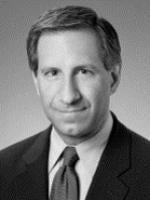In Iowa Public Employees’ Retirement System v. MF Global, Ltd., No. 09-3919, 2010 WL 3547602 (2d Cir. Sept. 14, 2010), the United States Court of Appeals for the Second Circuit vacated the dismissal of plaintiffs’ securities fraud claims and remanded the case to the district court, holding that the district court applied the “bespeaks caution” doctrine erroneously to statements that contained both present and future elements. This decision provides guidance as well to the application in the Second Circuit of the safe harbor for forward-looking statements established under thePrivate Securities Litigation Reform Act of 1995 (the “Reform Act”), 15 U.S.C. § 78u-5.
On February 27, 2008, a broker at MF Global, Ltd.’s (“MF Global”) lost $141.5 million speculating in wheat futures. The broker had taken positions vastly in excess of MF Global’s trading limits and collateral requirements. Although MF Global had controls for limiting its exposure to market risks in brokerage accounts, the firm had deactivated the controls on the broker’s account to speed transactions. After the loss was revealed, the stock of MF Global plunged.
Plaintiffs were purchasers of MF Global stock. They filed a putative class action asserting claims under Sections 11, 12(a)(2) and 15 of the Securities Act of 1933, 15 U.S.C. §§ 77k, 77l(a)(2), 77o, alleging that MF Global made material misstatements and omissions in its July 2007 prospectus and registration statement issued when the company went public. Plaintiffs claimed that the prospectus misrepresented and failed to disclose material facts relevant to the strengths and weaknesses of MF Global’s risk-management system (the “Risk Management Claims”).
The United States District Court for the Southern District of New Yorkdismissed the Risk Management Claims on the ground that cautionary language elsewhere in the prospectus rendered the cited statements or omissions non-actionable pursuant to the “bespeaks caution” doctrine. The “bespeaks caution” doctrine was adopted and applied by the Second Circuit in, among other cases, Luce v. Edelstein, 802 F.2d 49, 56 (2d Cir. 1986). Pursuant to the doctrine, “a forward-looking statement accompanied by sufficient cautionary language is not actionable because no reasonable investor could have found the statement materially misleading. . . . In such circumstances, it cannot be supposed by a reasonable investor that the future is settled, or unattended by contingency.” That is because “[a] forward-looking statement (accompanied by cautionary language) expresses the issuer’s inherently contingent prediction of risk or future cash flow; a non-forward-looking statement provides an ascertainable or verifiable basis for the investor to make his own prediction.” The “bespeaks caution” doctrine is the precursor to the safe harbor for forward-looking statements established under the Reform Act. (The Reform Act’s safe harbor provision was not pertinent to this case because it does not apply to initial public offerings. See 15 U.S.C. § 78u-5(b)).
Plaintiffs appealed the district court’s dismissal of the Risk Management Claims pursuant to the “bespeaks caution” doctrine. The Second Circuit reversed. Addressing the Risk Management Claims, the Second Circuit observed that the applicability of MF Global’s risk management system to employee accounts was ascertainable at the time the prospectus was issued. Thus, plaintiffs’ allegations that the prospectus failed to disclose the material fact that MF Global’s Risk Management System protocols and procedures did not apply to the Company’s employees when trading for their own accounts specified an omission of present fact, not a prediction of the future. The Court thus disagreed with the district court’s determination that plaintiffs’ allegations concerning “misrepresentations about specific or general shortcomings in MF Global’s risk management system that existed at the time the Prospectus was issued” were “essentially alleging that Defendants failed to disclose the risk of a future negative event.” The Second Circuit held this was a misapplication of the threshold test for application of the “bespeaks caution” doctrine.
The Second Circuit noted further that statements “may contain some elements that look forward and others that do not.” The Court gave several examples of this type of statement, noting “[a] characterization of present or historical fact may be partially predictive. . . . A present fact[,] like an appraisal or valuation[,] may depend on predictions: of future cash flows for example, or future risks. . . . A forecast may extrapolate present or historical facts into the future.” Crucially, however, the Court observed that “in each instance the forward-looking elements and the non-forward-looking are severable.” The Court thus remanded the Risk Management Claims to the district court to analyze the plaintiffs’ allegations under the directive that the “bespeaks caution” doctrine would not apply to characterizations of MF Global’s risk-management system insofar as those characterizations communicate present or historical fact as to the measures taken.
This case illustrates a difference between the Second and Third Circuits in addressing the protections from liability accorded to statements containing both present and future components. The Second Circuit suggests that district court should sever forward-looking components from statements also containing present components. The Third Circuit, in In re Aetna, Inc. Securities Litigation, No. 09-2970, 2010 WL 3156560 (3d Cir. Aug. 11, 2010) [see blog article here], held that despite that certain elements of defendants’ statements regarding pricing policies were partly historical, those elements could not be distinguished from the statements’ other assertions about the future. The Third Circuit explained that while mixed present/future statements are “not entitled to the safe harbor with respect to the part of the statement that refers to the present,” when the present tense statements cannot “meaningfully be distinguished from the future projection of which they are a part,” to the extent that those statements contained assertions about the present, “the assertions of current fact are too vague to be actionable.” Over time this difference may develop into a more pointed conflict between the Circuits on their respective approaches to safe harbor afforded to certain forward-looking statements.



 />i
/>i
